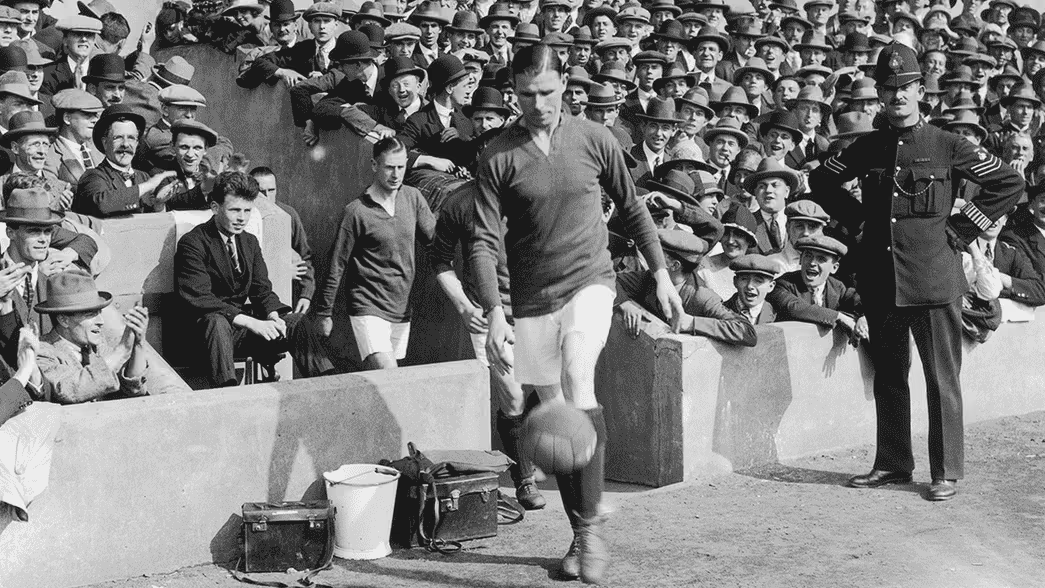Subtotal $0.00
Charlie Buchan: 1920s football icon
Charlie Buchan football icon and era-defining forward, he remains one of the most prolific attackers of the 1920s. His rise from local beginnings to the top tier mirrors the wave of professionalism sweeping English football between the wars. Buchan’s pace, intelligent movement, and ruthless finishing turned him into a constant goal threat. He captivated Sunderland supporters and earned a place among the division’s leading scorers, helping the club climb the table and forge a reputation for attacking intent. Off the pitch, his discipline and work rate set a template for the modern forward. Stories of his goals endure in club histories, where he is remembered as a true icon of the era. His name survives in the record books as a benchmark for forward excellence in English football.
From the moment he hit the scene, Buchan’s impact extended beyond personal tallies. He became a symbol of a shifting game—faster, smarter, more professional. His success at Sunderland established him as one of the league’s most feared forwards, and his subsequent move to Arsenal signalled a new chapter for the club’s attacking ambitions. The phrase Charlie Buchan football icon is not a casual label; it captures a player who helped redefine how forwards could operate in space, time runs, and finished chances under pressure. For a closer look at his Arsenal legacy, see Arsenal’s profile of Charlie Buchan.
Arsenal and Sunderland career milestones
In Sunderland, Buchan established a blueprint for goal-scoring regulars. He became a dominant figure in the attack, translating pace into goals with clinical precision. His early exploits helped Sunderland climb the table and build a reputation for forward-led play that unsettled even the best defenses of the era. The ability to combine intelligent movement with finishing instinct made him a target for opposition managers and a fan favorite at the Stadium of Light. These years laid the foundation for a career that would travel south to a club ready to embrace his attacking philosophy and elevate it to new heights. Acknowledging his Sunderland years helps explain why he later mattered so much to Arsenal as well.
After the transfer to Arsenal, Buchan continued to rack up goals and influence. At Arsenal, he helped shape the club’s attacking philosophy during a formative period. He was part of a broader modernization of the forward line, emphasizing quicker transitions, sharper runs, and more precise finishing. His impact extended beyond personal accolades; it influenced teammates, coaching ideas, and the club’s overall identity. Sunderland’s and Arsenal’s fans still discuss his milestones with pride, and historians note how his presence bridged two great clubs in a shared history of evolution in English football. For additional context on Sunderland’s history, you can explore their archive at Sunderland’s history archive.
Impact on English top-flight football
The 1920s were a period of rapid change in English top-flight football, and Charlie Buchan football icon stood at the center of that shift. He embodied a transition from raw power to intelligent, anticipatory forward play. Opponents learned to adjust to his pace and his knack for arriving at the right moment to convert chances. His habit of pressuring defenses, combined with clinical finishing, helped popularize a more dynamic attack across the division. The era’s rising crowds and expanding stadia amplified the reach of played styles, and Buchan’s efficiency became a touchstone for the sport’s evolution. In short, he helped redefine what forward play looked like on England’s biggest stages.
Across his career, Buchan’s influence extended beyond goal totals. He helped elevate Arsenal’s reputation for attacking intent and set standards for future generations of forwards. The 1920s were described by historians as a football revolution, and the forward’s role was central to that revolution. The legacy of the Charlie Buchan football icon can be seen in how teams prized pace, poise, and precise finishing as essentials of top-tier football. For a broader historical frame, BBC Sport’s overviews of early modern football provide context for players like him and the era he helped define.
Legacy of a prolific goalscorer
The legacy of Buchan lies not only in the goals he scored but in how he changed expectations for forwards. He demonstrated that a striker could blend instinct with structured movement, creating more opportunities through smart positioning and relentless work rate. His influence still echoes in how clubs teach finishing drills, run patterns, and off-ball anticipation. For fans of both Sunderland and Arsenal, his name remains a touchstone—an example of how a single player can drive a club’s identity and set a standard for generations of forwards to follow. His scorebooks tell a story of consistency, ambition, and a relentless pursuit of excellence that shaped English football’s landscape.
Key attributes that define the legacy of the Charlie Buchan football icon include pace, timing, finishing, and a forward’s sense of space. These traits helped him become a benchmark for prolific goalscorers who could influence games even when defenses adapted. The lasting memory is not only the numbers but the influence on team culture, coaching emphasis, and the way fans remember a player who could change a match with a single run or strike. His example continues to inform how coaches develop attacking lines at both historic clubs and modern academies.
The football revolution of the 1920s
The 1920s marked a football revolution in England, with professionalisation and growing crowds transforming the game’s scale. Charlie Buchan football icon was among the leaders of this shift, illustrating how forwards could be sharp, mobile, and commercially impactful. Tactics evolved, training intensified, and the sport’s profile rose as clubs capitalised on new revenue streams and expanding media coverage. Buchan’s era demonstrated that success required more than raw power—it demanded intelligent movement, consistent finishing, and the willingness to adapt. His career, spanning Sunderland and Arsenal, mirrors the broader reforms that defined interwar football.
As the century progressed, the 1920s are remembered for laying the groundwork of modern professional football in England. Forward players like Buchan influenced coaches, teammates, and fans alike, contributing to a culture that prized attacking intent. His legacy sits at the intersection of personal achievement and the sport’s broader transformation. For readers seeking further historical context, a range of football history resources explore how the 1920s reshaped English football and created the conditions for later generations to thrive, with Buchan as a central example of that transformation. Outbound references offer additional perspectives on this pivotal decade.





